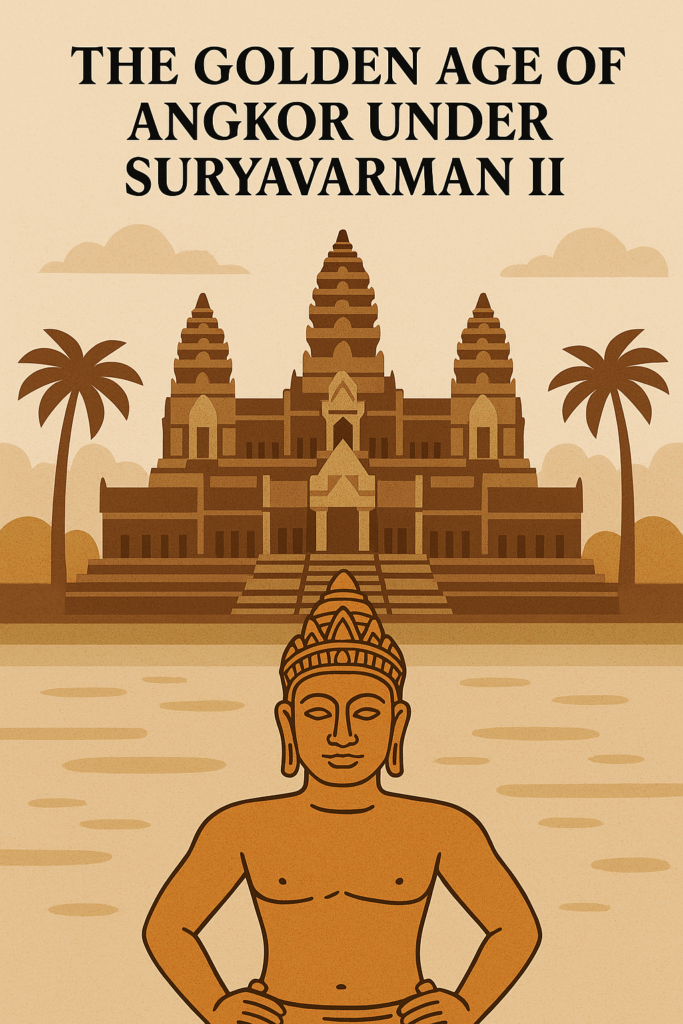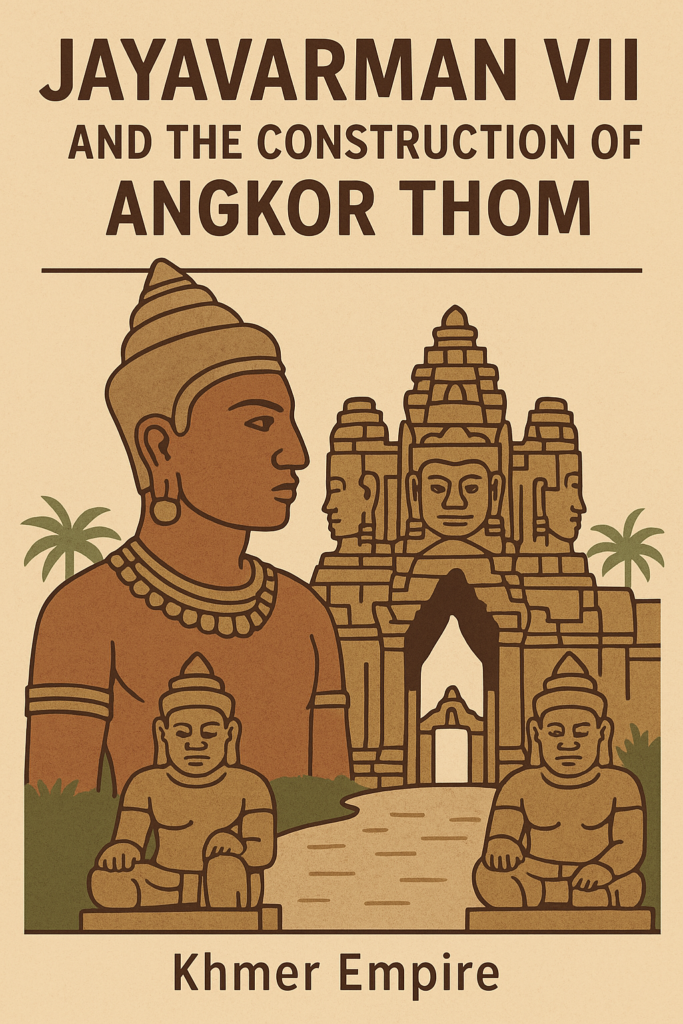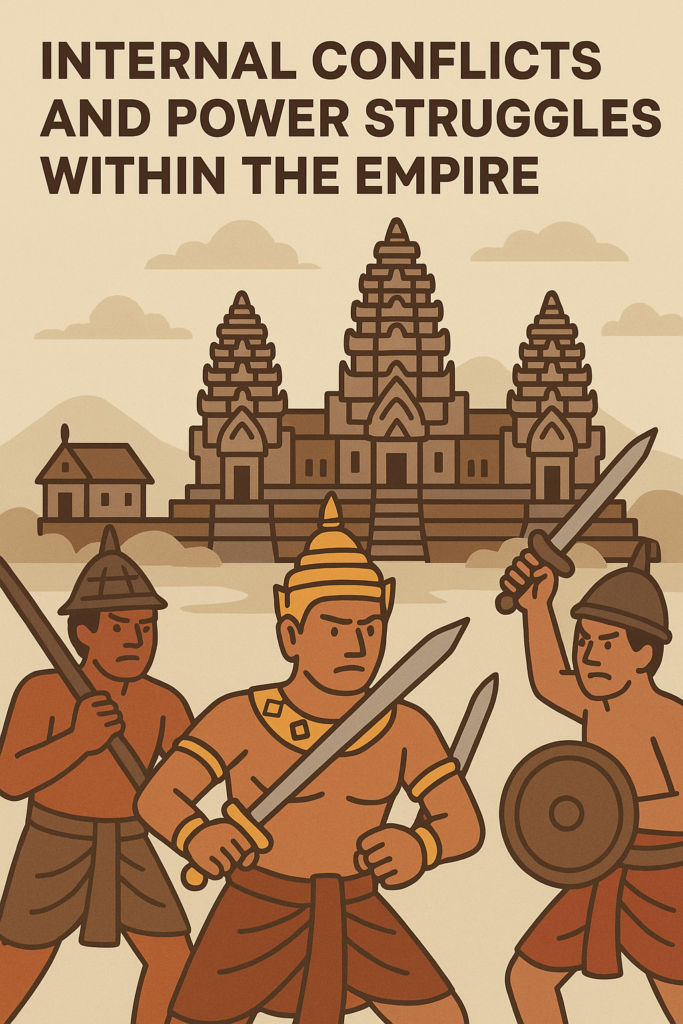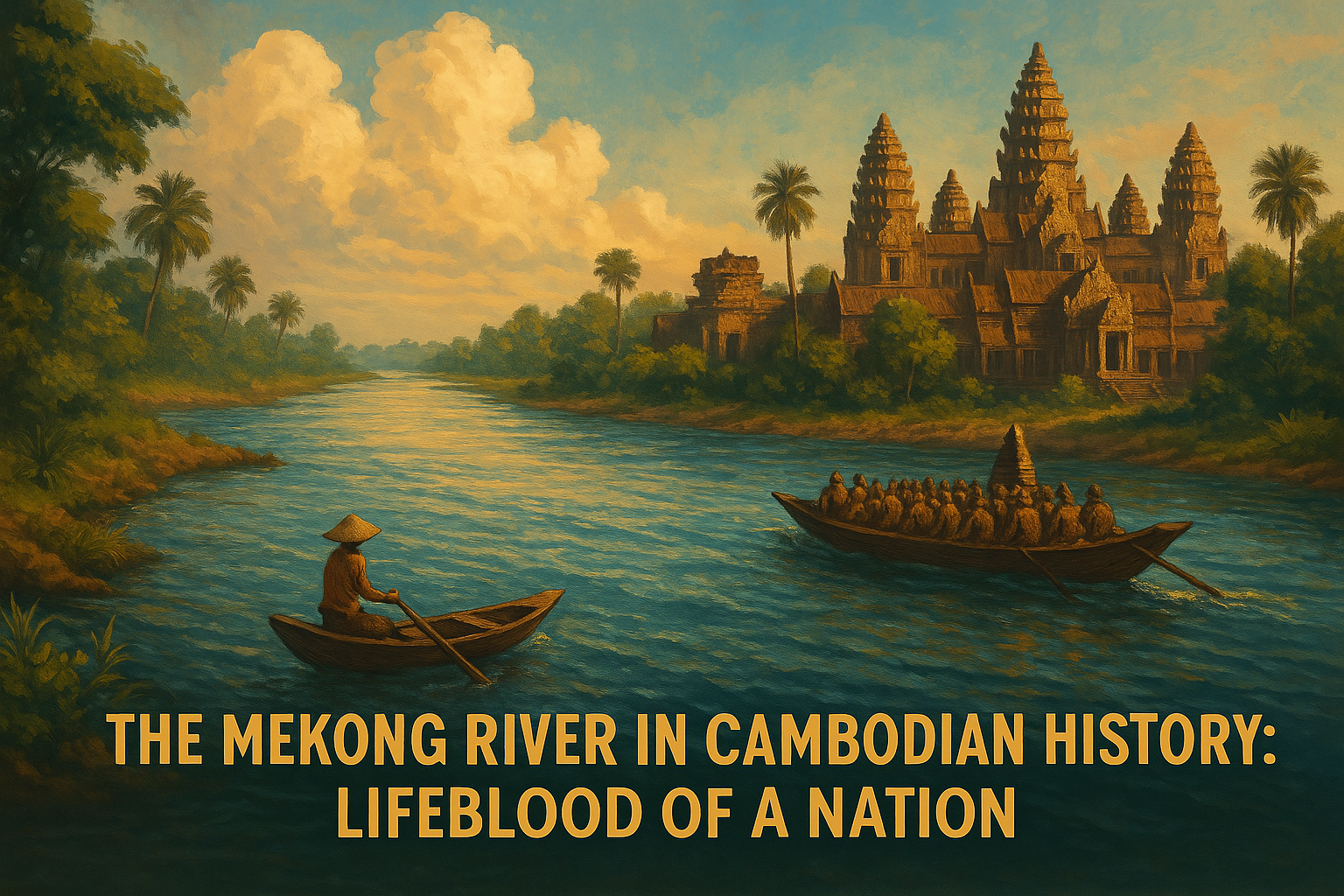
The Khmer Empire was one of the most magnificent civilizations in Southeast Asia, reigning from the early 9th century to the 15th century CE. Centered in present-day Cambodia, its capital at Angkor became a symbol of grandeur, ingenuity, and spiritual devotion.
At its height, the Khmer Empire dominated large parts of mainland Southeast Asia. Its rulers built monumental temples, organized vast irrigation systems, and cultivated a complex society rooted in Hindu and Buddhist beliefs. Yet, like all great empires, its rise was matched by an eventual fall—brought on by internal divisions, environmental stress, and external threats.
This article traces the full arc of the empire’s history—from its founding by Jayavarman II to the mysterious decline of Angkor centuries later.
Jayavarman II and the Founding of the Khmer Empire

The story of the Khmer Empire begins with Jayavarman II, a visionary king who unified various warring principalities in the early 9th century. Around the year 802 CE, he declared himself chakravartin—a universal monarch—at the sacred mountain of Phnom Kulen, proclaiming the independence of Kambuja from Javanese influence.
Jayavarman II’s reign marked the official beginning of the Khmer Empire, or Angkorian period. He established the foundation of a centralized monarchy rooted in divine kingship and religious symbolism. His reign also initiated a long tradition of temple building, aligning royal authority with sacred geography.
Though he ruled from several locations, including Hariharalaya near present-day Roluos, his declaration of unity laid the ideological and political groundwork for centuries of Khmer dominance.
The Expansion of Khmer Rule Across Southeast Asia

Following Jayavarman II, a succession of kings expanded Khmer territory through military conquest, diplomacy, and infrastructure development. The empire stretched across Cambodia, southern Vietnam, Laos, eastern Thailand, and even into Myanmar and Malaysia at various points.
Key to the Khmer expansion was their mastery of agriculture and water management. Through an elaborate system of canals, reservoirs (barays), and rice paddies, they ensured surplus food supplies that could sustain a growing population and army.
The Khmer kings built networks of roads connecting cities and temples, enabling both trade and military mobilization. Conquered peoples were often absorbed into Khmer society, contributing to the empire’s cultural diversity.
Temples such as Preah Ko, Bakong, and Banteay Srei reflect the early architectural flourish and the growing religious complexity—blending Hindu and indigenous Khmer beliefs.
The Golden Age of Angkor Under Suryavarman II

The 12th century marked the golden age of Angkor, especially under the reign of Suryavarman II (1113–1150 CE). He expanded the empire’s borders, strengthened administrative systems, and commissioned the most iconic structure of the ancient Khmer world: Angkor Wat.
Dedicated to the Hindu god Vishnu, Angkor Wat is the world’s largest religious monument. It symbolized the divine nature of the king and was designed to mirror the Hindu cosmos. Its five central towers represent Mount Meru, the mythical center of the universe.
Suryavarman II was a shrewd military leader and diplomat. His reign was marked by regional campaigns and contact with neighboring states, including Champa and Dai Viet. His legacy endures in the unparalleled architectural beauty and symbolism of Angkor Wat—a temple that still graces Cambodia’s national flag today.
Jayavarman VII and the Construction of Angkor Thom

The next towering figure in Khmer history was Jayavarman VII (reigned c. 1181–1218 CE), widely considered the most powerful and devout ruler of the empire. He came to power after repelling an invasion by the Cham and launched massive construction and reform programs.
His most ambitious project was the creation of Angkor Thom, a vast, walled city with monumental gates and the iconic Bayon Temple at its center. Unlike his predecessors, Jayavarman VII was a Mahayana Buddhist, and he reoriented Khmer art and architecture to reflect Buddhist themes—without completely discarding Hindu traditions.
He also built hospitals, rest houses, and roads throughout the empire, embodying the ideal of the compassionate, enlightened ruler. His rule represents the apex of Khmer civilization, blending political strength with spiritual purpose.
Internal Conflicts and Power Struggles Within the Empire

Despite outward grandeur, the Khmer Empire was not without its internal struggles. After the death of Jayavarman VII, his successors lacked his strength and charisma. The shift from Buddhism back to Hinduism under Jayavarman VIII caused religious tensions and led to the defacement of many Buddhist statues and temples.
Royal succession often sparked power struggles, with rival princes and regional lords vying for control. The centralized monarchy weakened as court factions and provincial governors gained influence.
This instability gradually eroded the cohesion of the empire. Combined with rising external threats, these internal fractures made the once-unified Khmer state increasingly vulnerable.
The Decline of Angkor and the Shift of the Capital

By the 14th and 15th centuries, Angkor’s influence was visibly waning. The Siamese kingdom of Ayutthaya began encroaching on Khmer territory. In 1431, Ayutthaya forces invaded and sacked Angkor, marking a symbolic end to its dominance.
In the aftermath, the Khmer royal court moved south, eventually settling near the present-day capital of Phnom Penh. The shift marked not only a geographic relocation but also a transition in the political and cultural identity of Cambodia.
The once-glorious capital of Angkor was gradually reclaimed by the jungle, its temples left to crumble in silence. The Khmer Empire’s collapse was not sudden but rather a long, drawn-out process of decline driven by both external pressures and internal disintegration.
Environmental and Climatic Factors Leading to the Fall

Modern scientific research has revealed that environmental factors played a major role in Angkor’s decline. Droughts interspersed with intense monsoon flooding disrupted the delicate balance of the empire’s water management systems.
The elaborate hydraulic infrastructure, once the empire’s lifeblood, became its vulnerability. Prolonged climate stress likely led to crop failures, population decline, and social unrest. As water reservoirs silted up and canals broke down, the agricultural economy could no longer support the vast urban population.
Deforestation and soil degradation may have compounded the crisis, weakening the empire’s resilience to environmental shocks.
These ecological challenges, combined with political instability and military threats, created a perfect storm that brought the great Khmer Empire to its knees.
Conclusion: A Civilization Remembered
Though the Khmer Empire fell, its legacy endures in stone and spirit. The grandeur of Angkor, the brilliance of its kings, and the ingenuity of its engineers continue to inspire awe centuries later.
Cambodia today draws its identity and pride from this rich heritage. Temples like Angkor Wat, Bayon, and Ta Prohm remain global symbols of the Khmer people’s creativity and strength.
The rise and fall of the Khmer Empire offers timeless lessons—on the power of human ambition, the fragility of empires, and the enduring imprint of culture. In the silence of the jungle-covered ruins, one can still hear the echoes of a once-mighty civilization that shaped the soul of Southeast Asia.





